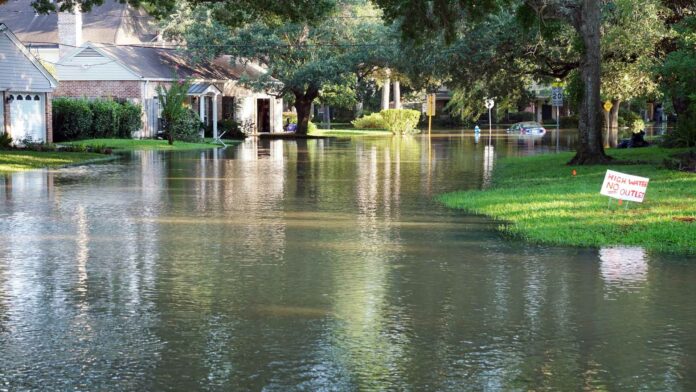
Key Highlights
- US homeowners face $18.8B in flood damage annually, according to First Street Foundation
- Insurance premiums set by federal government would cover less than -25% of potential damage
Severe Flood Risk Applies to 4.5M Homes
Thanks to the latest report by First Street Foundation, a nonprofit committed to making climate risk more transparent, nearly 4.5M homes throughout the country are at severe risk for flood damage.
This figure of 4.5M homes at severe risk of flood damage includes homes with high price tags as in wealthy enclaves such as Bainbridge Island off the coast of Washington. This figure also includes homes located in areas in the Mid-Atlantic and the Mountain West along with the usual coastal suspects.
Potential Cost of Flooding Exceeds Insurance Premiums by 4.5 Times
With First Street data now available, nearly every homeowner can access and apply an estimate of actual monetary risk from flood damage to their specific property.
Many high-risk homes with high price tags are included in this 4.5M number. According to Matthew Eby, executive director of First Street,“The (insurance) pricing for (many) high-risk homes is not commensurate for the risk they carry. Our data shows exactly where the price of insurance needs to be dramatically increased to cover the economic risk that flooding poses today, and into the future.”
National Flood Insurance Program (NFIP) Run by Federal Emergency Management Agency (FEMA)
FEMA manages 95% of the NFIP and NFIP and FEMA is currently +$20B in debt. Why? Because it under-charges homeowners for flood insurance premiums.
Admittedly, First Street said that even this latest report could be underestimating what flood damage could cost. Why? The First Street model capped losses per home at $250,000, FEMA’s maximum payout per house. Obviously, this $250,000 doesn’t account for skyrocketing home prices nor excessive price tags on high-tier homes that cost +$2M.
Changing Climate To Raise Estimates of Cost Damages Considerably
Right now, First Street has designated some 14.6M properties as those with severe flood risk rather than the 4.5M with severe risk of flood damage. Some of those 10M properties sitting in the middle of severe flood risk and severe flood damage have already made major modifications and risk mitigations to their homes. Others may be located in areas that naturally mitigate those risks by natural ground fixes.
Even with those exceptions, First Street sees total damages increasing by +61% over the next 30 years. Such an increase would amount to more than +$30B/year assuming the insurance payout rate stays at the same cap rate of $250,000. If that cap rate goes up…you do the math.
On top of a someday increased cap rate, who’s to say how high flood cost damages could go once escalating property values and escalating flood risks are factored into the equation.
Thanks to the First Street Foundation, the Federal Emergency Management Agency, the National Flood Insurance Program and Bloomberg.






















